Q
Does the 2019 Camry have push to start?
The 2019 Toyota Camry in the Malaysian market does come with the Push to Start button ignition feature. This handy tech has become a standard staple on the model, letting drivers fire up the engine with just a button press instead of fumbling with a key. Pair that with the smart key system, and you've got keyless entry too – definitely adds a nice layer of convenience to daily drives.
But it's not just about the upgraded ignition. The 2019 Camry also packs Toyota Safety Sense, which includes active safety features like pre-collision warning and lane departure alert. That really shows Toyota's commitment to keeping drivers safe out there.
For Malaysian folks, dealing with the heat is a daily thing, so the remote start function (though you'll want to check the specific trim level for this) is a total lifesaver. Just hit the button on the smart key, and you can fire up the AC to cool things down before you even step in – super practical.
If you're thinking about picking one up, I'd recommend heading to an authorized dealer to check out the actual car and get a feel for the features. It's also worth comparing the different trim levels, because sometimes the base models might skimp on a few of the high-tech goodies. But overall, the 2019 Camry is pretty well-kitted out in the tech department, right in line with what modern buyers are looking for in a smart, connected ride.
Special Disclaimer: This content is published by users and does not represent the views or position of PCauto.
Related Q&A
Q
How to unlock 2019 Camry without a key?
If you accidentally lock your keys inside a 2019 Toyota Camry, Malaysian owners can try these steps to regain access. First off, check if your spare key is handy—this is by far the safest and most straightforward fix. If the spare isn’t available, reach out to an authorized Toyota dealer or a professional locksmith. They can verify your ownership using the Vehicle Identification Number (VIN) and provide proper unlocking services. Some models might support remote unlocking via the Toyota Mobile App, but you’ll need to have registered and linked your account beforehand.
A word of caution: Avoid trying to jimmy the lock yourself with tools like coat hangers or Slim Jims. This can easily damage door seals or electrical wiring, and modern cars with anti-theft systems will likely trigger alarms or even lock you out completely if mishandled.
For everyday preparedness, keep a spare key with a trusted friend or family member, or consider installing a digital key box as a backup. Also, given Malaysia’s hot and humid climate, prolonged sun exposure can age door rubber seals over time—regular maintenance helps reduce the chance of stuck lock cylinders. If you’re frequently having issues with locking/unlocking, it’s worth getting the central locking module or key battery checked by a service center.
Q
How to start a 2019 Toyota Camry with dead key fob?
If your 2019 Toyota Camry's smart key dies, you can still fire up the car using the hidden mechanical key and emergency start method. First, locate the release button on the side of the key fob—press it to pop out the built-in metal key. Then, use that key to pry off the cover hiding the keyhole on the driver's door handle. Stick the key in and turn it counterclockwise to unlock the door. Once you're inside, hold the dead key fob right up against the start button, press the brake pedal, and hit the start button—engine should roar to life. Just a heads-up though: newer or differently spec'd models might have slight variations in the steps.
For Malaysian owners, that hot tropical weather can really drain key fob batteries faster. I'd recommend checking the battery level regularly and swapping in a fresh CR2032 when needed. Also, keep your key away from phones and other electronics to avoid signal interference—it helps! Some Toyota models even let you unlock remotely via the mobile app, but you'll need to set that up beforehand and keep your vehicle's connected services active. If none of these tricks work, it could be a dead car battery or another electrical issue. In that case, best to call your nearest Toyota authorized service center to get it checked out.
Q
Is the 2019 Camry keyless?
The 2019 Toyota Camry does come with Keyless Entry in the Malaysian market. This handy feature lets drivers unlock or lock the car just by touching the sensor on the door handle – no need to fumble around for the key. Even better, some higher-spec variants step it up with Push Start. Just keep the smart key in your pocket or bag, hop in, and push the button to fire up the engine. It’s a real convenience boost for daily drives.
Keyless systems have become pretty standard in mid-to-high-end cars here in Malaysia, and honestly, they’re a lifesaver in our tropical heat. No more sweating while digging through your bag for keys when it’s scorching outside.
A quick heads-up though: not all Camry trims might have these features. Configurations can vary, so it’s always smart to check the exact specs with your local dealer before buying.
Also, remember these smart keys run on batteries. If yours stops responding, dead batteries are usually the culprit – a quick replacement should fix it. And don’t worry, there’s still a traditional mechanical key hidden inside for emergencies.
If you’re eyeing a used Camry, make sure to test the key functions thoroughly. Confirm it’s the original key too – saves you headaches down the line.
Q
What are common 2019 Camry XSE problems?
The 2019 Toyota Camry XSE has proven itself a solid performer in the Malaysian market, though some owners have pointed out a few common hiccups. For instance, a number of drivers report a slight jerkiness from the transmission during low-speed driving – that's typically down to the 8-speed auto's tuning characteristics, something a simple software update can usually smooth out. Then there's the infotainment system; a small handful of owners mention occasional touchscreen lag when things get really hot outside. Staying on top of system updates should help keep things running smoothly there.
It's worth noting that the sound insulation takes a bit of a hit with those 19-inch wheels – road noise gets pretty noticeable over rough surfaces. That's the usual trade-off with sportier designs, though; if quietness is a priority, swapping in some comfort-focused tires might be worth considering.
Given Malaysia's sweltering climate, keeping an eye on your battery health is a must – high temperatures speed up degradation. Also, regular cleaning and maintenance of the AC system go a long way in preventing those unpleasant odors from popping up.
Under the hood, the 2.5L Dynamic Force engine is a star with its 40% thermal efficiency, but don't skimp on maintenance. Sticking to the 10,000 km or 6-month service intervals (whichever comes first) and using fully synthetic oil is key to keeping that engine performing at its best.
All things considered, these are mostly minor, fixable niggles that don't detract from the Camry XSE's appeal as a sporty midsize sedan. Plus, Toyota's well-established after-sales network in Malaysia means help is never too far away when you need it.
Q
How to auto start a 2019 Toyota Camry?
To remote start your 2019 Toyota Camry, first make sure it’s equipped with the smart key system – that’s the baseline for this feature, and honestly, it’s a lifesaver in Malaysia’s sweltering heat. Here’s how you do it: press and hold the lock button on the key fob for about a second, then immediately hold down the remote start button (usually that circular arrow icon) for 3 full seconds. You’ll know it worked when the headlights flash or you hear a quick beep from the horn. The engine’ll run for around 10 minutes before shutting off automatically, but if you need more time, just repeat the steps. Heads up though – the doors stay locked when this is active, which is good for security.
If your Camry didn’t come with factory remote start, don’t sweat it. You can always add an aftermarket system. There are plenty of car accessory shops around Malaysia that do this, with prices ranging from a few hundred to over a thousand ringgit. Pro tip: stick with a reputable shop to make sure it’s compatible and won’t mess with your car’s original wiring warranty.
Also, Malaysia’s rainy, humid weather can sometimes mess with the remote signal range, so try to stay within 30 meters when using it. If it doesn’t start on the first try, check your key fob battery or just get a bit closer to the car and try again. Oh, and here’s a handy trick: when you remote start, the AC kicks on automatically with whatever settings you had when you last turned off the car. So on hot days, crank the AC down to its coldest setting before you park – that way, the cabin’ll be nice and cool when you hop in. Just keep in mind, it’ll burn a tiny bit more fuel, but honestly, it’s worth it to avoid getting roasted alive.
Q
What does it mean when my 2019 Toyota Camry is revving but not moving?
If your 2019 Toyota Camry is revving but not moving forward, that's usually a sign of transmission trouble. The most common culprits are low or degraded transmission fluid, worn clutch plates (if you're driving a manual), or a failing torque converter in automatic models. Here in Malaysia's hot and humid climate, transmission fluid tends to oxidize and break down faster under high temperatures.
Start by checking your transmission fluid—both the level and color. Healthy fluid should be a clear, vibrant red. If it's dark brown or smells burnt, it needs to be changed immediately. For automatic transmissions, ECU glitches can also cause this issue, so you'll need a professional scanner to pull any error codes.
In daily driving, try to avoid aggressive acceleration and prolonged idling—both habits accelerate transmission wear. If the problem persists, don't delay visiting a Toyota authorized service center. Putting off repairs could lead to more severe transmission damage and much higher repair bills down the line. Remember, regular maintenance and proper driving habits are key to keeping your transmission running strong for the long haul.
Q
Does the 2019 Toyota Camry use synthetic oil?
For the 2019 Toyota Camry in the Malaysian market, synthetic engine oil is the way to go – specifically fully synthetic 0W-20 or 5W-20 that meets Toyota's original specifications. These oils are better suited to Malaysia's hot climate, delivering top-notch engine protection, improved fuel efficiency, and longer intervals between changes. Toyota officially recommends an oil change every 10,000 kilometers or 6 months, whichever comes first, but you might need to adjust that based on your driving habits and the roads you tackle.
Synthetic oils outperform mineral oils when it comes to high-temperature stability and anti-wear properties, making them ideal for precise powertrains like the Camry's Dynamic Force engine. Malaysian Camry owners should keep an eye out for the API SN or SP rating and the ILSAC GF-6 certification mark when choosing oil – these standards guarantee quality. If you're often stuck in city traffic jams or drive in really hot conditions, think about shortening the interval to around 8,000 kilometers.
It's a good idea to get your maintenance done at an authorized Toyota service center. They use factory-approved synthetic oils and will reset the maintenance reminder system properly. Sticking to regular oil changes with the right stuff will help your Camry's 2.0L or 2.5L engine perform at its best, and it'll also keep your warranty intact.
Q
What kind of engine is in the 2019 Toyota Camry?
In the Malaysian market, the 2019 Toyota Camry primarily offers two engine options: a 2.5-liter four-cylinder naturally aspirated engine (code-named A25A-FKS) and a 2.5-liter four-cylinder hybrid system (code-named A25A-FXS). Both belong to Toyota's Dynamic Force family, packing advanced tech like high-speed combustion technology and Variable Valve Timing-intelligent Electric (VVT-iE). This translates to noticeable improvements in both fuel efficiency and performance. The 2.5L petrol variant churns out 203 horsepower, while the hybrid delivers a combined 215 horsepower. They're paired with an 8-speed automatic (petrol) and an E-CVT (hybrid) respectively.
For Malaysian buyers, both engines suit local road conditions nicely. The hybrid, in particular, really shines in stop-and-go city traffic, offering significant fuel savings. On top of that, Toyota's after-sales service network in Malaysia is well-established, making maintenance and repairs relatively hassle-free.
What really stands out is the Dynamic Force engine's thermal efficiency – an impressive 40% for the petrol model and 41% for the hybrid. That's leading the pack in its segment and a testament to Toyota's long-standing expertise in engine development. Ultimately, customers can pick the powertrain that best fits their budget and needs.
Q
How big is a 2019 Camry tank?
The 2019 Toyota Camry comes with a 60-liter fuel tank (approximately 15.8 gallons), a design that delivers impressive range – perfect for Malaysia's driving needs, whether you're tackling those long inter-state hauls or just your daily commute. As a midsize sedan, the Camry already boasts solid fuel efficiency, and paired with that 60-liter tank, you're looking at a combined fuel consumption of around 6 to 7 liters per 100 kilometers. That translates to a single fill-up taking you roughly 850 to 1,000 kilometers, though your actual mileage will vary based on driving habits and road conditions, of course.
Also, a quick note for Malaysian Camry owners: Toyota recommends using RON 95 or higher octane fuel to ensure optimal engine performance and fuel efficiency. If you're someone who hits the road for long drives regularly, keeping an eye on your fuel tank's seal integrity and the condition of your fuel filter is a smart move. It helps keep the fuel system clean and efficient, and prevents those annoying issues that can pop up from clogged filters due to impurities.
Need more info on fuel tank maintenance or tips to save on fuel? Your best bet is to check out the owner's manual provided by Toyota Malaysia or swing by an authorized service center for a chat.
Q
Why is there no heat in my 2019 Toyota Camry?
If your 2019 Toyota Camry's heater isn't putting out warm air, there are a few common culprits to check first. Start by verifying your coolant level—low coolant means the heating system can't do its job properly. While you're at it, make sure the coolant isn't old or contaminated, as that can seriously hinder heat transfer efficiency.
Next up, a faulty thermostat might be to blame. If it's stuck open, your engine might never reach optimal operating temperature, which directly impacts how much heat makes it into the cabin. Another possibility is a clog in the heater core or the heater system's radiator. If those passages get blocked, the hot coolant can't circulate to warm things up inside, so it's worth checking if those components are flowing freely.
Don't overlook the control side either—a malfunctioning climate control module or blend door actuator could prevent the heater from adjusting properly or even turning on at all.
I get it, in Malaysia's hot weather, the heater doesn't get much love. But regular checks of both the cooling and heating systems are still a smart move to ensure everything works when you actually need it. If you've ticked all these boxes and the heat's still MIA, it's time to swing by a professional workshop for a deeper dive. Catching small issues early beats letting them snowball into bigger, costlier problems down the line.
Latest Q&A
Q
Does the 2019 Yaris have a backup camera?
The 2019 Toyota Yaris did come with a reverse camera in the Malaysian market. Back then, this feature was already becoming a standard fitment on most models, especially the mid-to-high spec variants. It displays a live feed of what's behind you on the infotainment screen, making reversing safer by helping drivers spot potential hazards and reducing blind spots.
Just a heads-up though, exact specs can vary between trim levels. If you're a Yaris owner, it's always best to check your owner's manual or give Toyota Malaysia a call to confirm if your specific model has this feature.
Reverse cameras are pretty much everywhere in modern cars these days. It's not just the Yaris – rivals like the Honda Jazz and Mazda 2 also offered similar safety tech, some even with dynamic guidelines or radar-based warning systems to make things even easier.
If you're looking at a used Yaris, do yourself a favor: test the reverse camera during your test drive. Make sure it works properly, and keep an eye out for any screen issues like fading or lag. That way, you can be sure this handy feature is in top shape and ready to help.
Q
What kind of engine is in the 2019 Toyota Yaris?
The 2019 Toyota Yaris in the Malaysian market primarily comes with a 1.5-liter 2NR-FE four-cylinder naturally aspirated petrol engine. This engine features Dual VVT-i (Dual Variable Valve Timing-intelligent) technology, churning out a maximum 107 horsepower and a peak torque of 140 Nm. It's mated to either a 7-speed CVT automatic or a 5-speed manual gearbox, delivering impressive fuel efficiency.
Renowned for its reliability and low maintenance costs, this engine is a solid fit for city commuting and also meets Malaysia's Euro 4 emission standards. It's worth noting that while naturally aspirated engines like this one might not deliver the same punch as turbocharged units, their simpler construction translates to better durability and lower upkeep expenses – a big plus given Malaysia's road conditions and climate. Toyota has also done a decent job with sound insulation on this engine, so noise levels are nicely controlled, especially at lower speeds.
If straight-line speed is your top priority, you might want to check out some other models in this segment. But when it comes to overall value for money, this 1.5L Yaris is a strong contender and remains a popular pick in the small car market.
Q
How long does a 2019 Toyota Yaris last?
The 2019 Toyota Yaris typically clocks up 150,000 to 200,000 kilometers or more on Malaysian roads, with its lifespan heavily relying on how well you maintain it and your driving style. This little workhorse is known for being tough as nails and rarely letting you down – it’s practically tailor-made for Malaysia’s city traffic and weather. Sticking to regular oil changes, keeping the cooling system spotless, and swapping out the timing belt when it’s due can really stretch its service life. Toyota’s got a solid after-sales network here, and genuine parts are easy to come by, which is a big plus for keeping it running long-term.
One thing to watch out for though – Malaysia’s hot and humid climate can be rough on rubber components and electrical bits. I’d recommend checking the chassis rubber parts and wiring insulation every couple of years to be safe. When it comes to holding value, the Yaris does pretty well in the used car market here; a five-year-old model usually still retains around 60% of its original price. If you’re mainly using it for city commuting and keep up with maintenance, there’s no reason it can’t last over 10 years without major repairs.
For Malaysian buyers on a budget looking at a used Yaris, pay extra attention to the transmission fluid change history and the condition of the air conditioning system – those are the usual trouble spots in our tropical weather.
Q
What is the 2019 Yaris known for?
The 2019 Toyota Yaris made a name for itself in Malaysia thanks to its solid reputation for reliability and fuel efficiency. This little hatchback packs a 1.5-liter Dual VVT-i engine under the hood, churning out 107 horsepower and 140 Nm of torque. Paired with a CVT gearbox, it’s a real fuel sipper – perfect for zipping around the city.
Safety-wise, it doesn’t skimp either. Standard kit includes VSC (Vehicle Stability Control), HAC (Hill-Start Assist Control), and a full complement of 7 airbags, which is reassuring. Its compact size – 4,140mm long – makes it a breeze to maneuver through tight city streets and squeeze into those tricky parking spots. The 2019 model also got a subtle style upgrade with LED daytime running lights and a chrome grille, giving it a slightly more modern look.
Here’s a testament to its toughness: you’ll often spot Yaris models serving as ride-hailing cars or taxis around Southeast Asia. That tells you something about how durable they are. If you’re shopping around in this segment, the Honda Jazz or Nissan Almera are worth a look too – both are pretty thrifty on fuel. But where the Yaris really shines is Toyota’s after-sales network in Malaysia. It’s one of the most extensive out there, which means getting it serviced or repaired is a whole lot more convenient. That’s a big plus in my book.
Q
Is the 2019 Yaris easy to park?
The 2019 Toyota Yaris is a solid pick for city driving in Malaysia. Its compact size and nimble handling make parking a breeze—at under 4 meters long with a tight turning radius, it weaves through tight parking lots and congested streets without breaking a sweat. Owners often praise the good visibility, and when paired with the mirrors and reverse sensors (some higher trims might even get a reverse camera), it’s a total lifesaver for parking, especially if you’re new to driving.
Think about it: if you’re regularly navigating cities like KL, a small car like the Yaris takes a lot of the stress out of parking. Malaysia’s older urban areas are full of those tiny, cramped parking spots, and a shorter car definitely has an easier time squeezing into them. Plus, the electric power steering makes the wheel feel super light when you’re inching around at low speeds.
But here’s the thing—while small cars rock for parking, they might not feel as planted as bigger vehicles when you’re cruising at highway speeds. So, just make sure to factor in your own driving style and what you really need before deciding.
View MoreRelated News
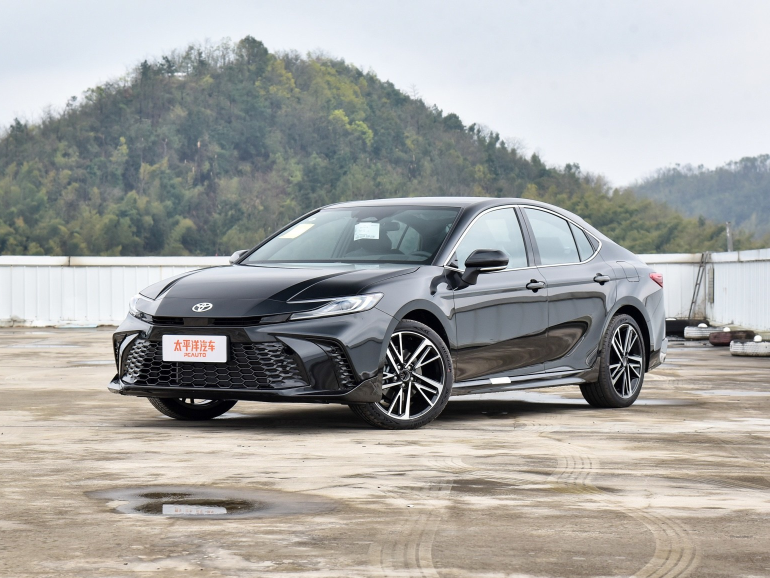
2025 Toyota Camry Test Drive: Quieter Cabin, More Enjoyable Driving!
JohnJun 20, 2025
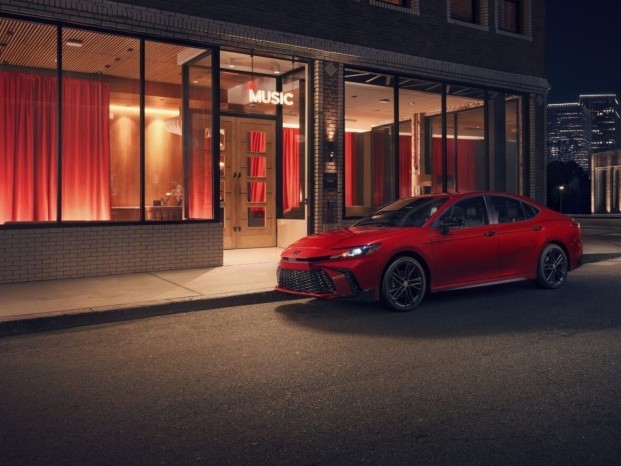
2026 Toyota Camry Introduces Nightshade Edition, Set to Launch in the U.S. This Fall
Kevin WongMay 6, 2025
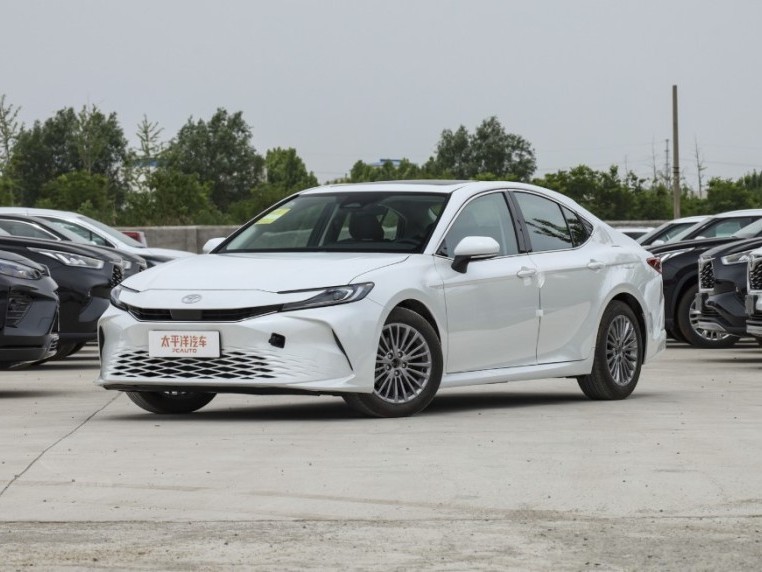
Toyota Camry XV80 Thailand Motor Expo 2024, 227PS, Fuel Consumption 5.1L/100KM
JohnDec 2, 2024
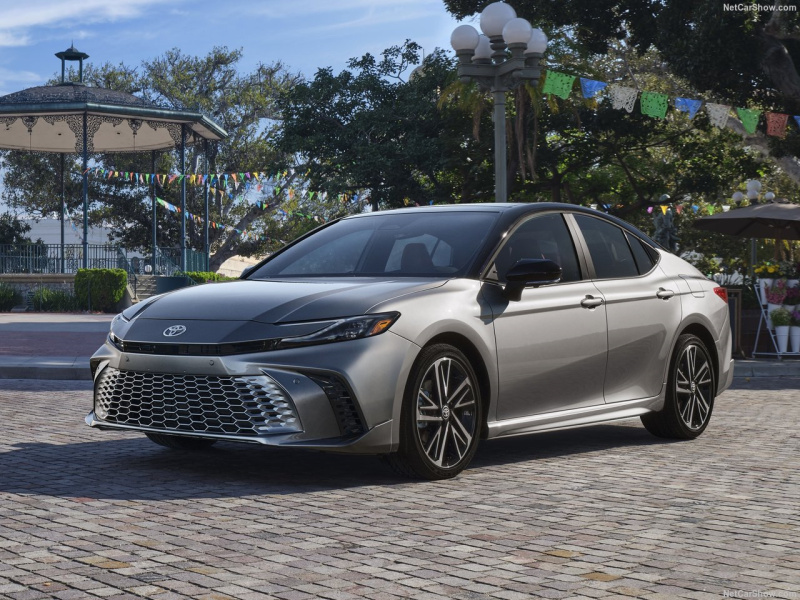
Why is Toyota Camry, with a cumulative sales volume of over 20 million vehicles, so popular among consumers worldwide?
MichaelOct 22, 2024
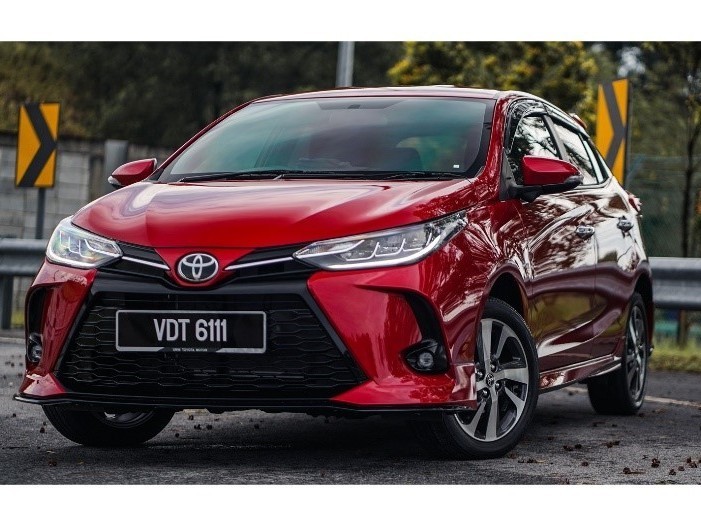
Spend the least money, buy the most suitable car: New car or used car, which one to choose?
RobertAug 28, 2024
View More








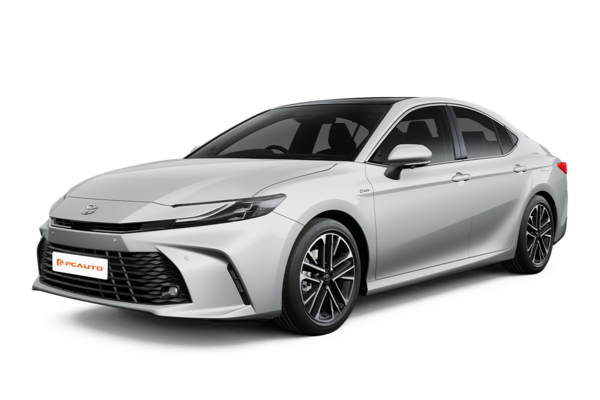




Pros
Cons